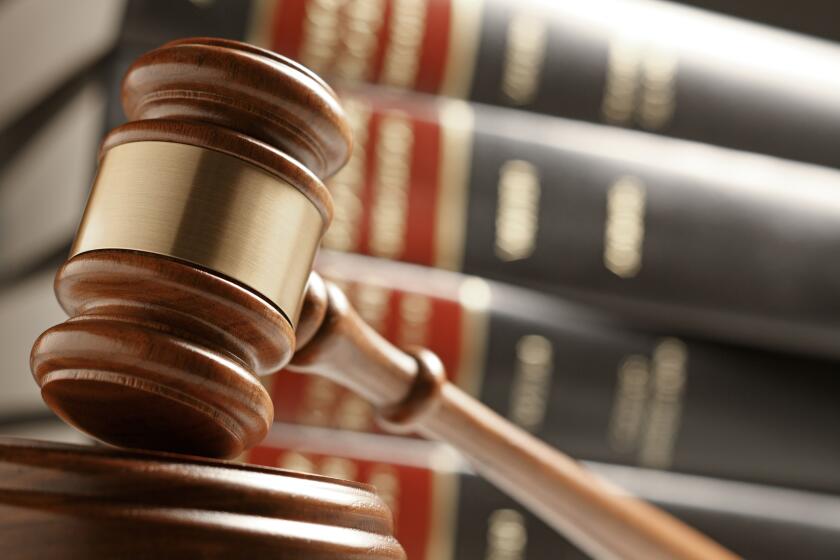Some laws just don’t consider boating industry
- Share via
Everyone knows that boats and teak wood are synonymous and that you
usually find teak somewhere on every boat. However, teak may become
scarce, according to the National Marine Manufacturers Assn., with
the Senate passing legislation that is now moving quickly through the
House.
But wait. Why does a bill “To sanction the ruling Burmese military
junta, to strengthen Burma’s democratic forces and support and
recognize the National League of Democracy as the legitimate
representative of the Burmese people and for other purposes” affect
the boating industry?
As a side effect of the legislation, the U.S. boating industry
would be banned from importing Burmese teak, thus making teak
smuggling a new black market. This could severely effect boating
manufacturers and boaters who use this durable wood for flooring,
trim work, support structures and many other applications.
Unfortunately, most legislators and environmentalists do not
understand issues affecting boating. The marine industry and boaters
themselves are also to blame, as they are mainly reactive, rather
than active on the issues.
A perfect example in Newport Harbor is the eel grass problem that
has grown so far out of proportion that I do not see a reasonable
solution in the near future. The Newport Beach Harbor Commission is
very concerned about the unfounded eel grass regulations and they are
trying to find a solution. However, I wonder about further eel grass
regulations if the text of the law is modified to include the catch
phase “harboring endangered species.”
I have mentioned before in many columns that eel grass is abundant
in Newport Harbor with no established baseline of how much is enough.
Some locals believe that the cleaner and clearer the bay water
becomes, the more sunlight penetrates down to the harbor’s bottom.
The sunlight stimulates eel grass growth.
As a side effect like the teak ban, the growth of eel grass is now
affecting boating with shoaling. As a side note, I have to mention
that the Water Quality Committee of Newport Beach, along with
volunteer events like Clean Harbor Day, have done an excellent job of
helping our waterways.
I worry that the day will come dock owners will be required to
install skylights to lessen the shading of the structures upon eel
grass.
The other night, I dreamt that I was consulting boat owners who
had applied for a new vessel eel grass shading permit from the
California Coastal Commission. The Commission had to approve the
shadow cast under the water from boats before the vessel could dock.
Oh yeah, the dream ended when the eel grass grew up and consumed the
boats.
Those not knowledgeable about boating are quick to point the
finger at boaters, and this is apparent in many news reports.
Remember the news reports from the Morro Bay area that since there
are dying sea otters then it must be the boaters running over the
creatures?
Yet, the otters are dying not from boaters but from landlubber’s
pet cat’s waste being washed into the sea. Only cats’ feces are known
to carry oocytes of Toxoplasma gondii and Sarcocystis neurona. These
protozoa’s cause brain infections in sea otters leading to death.
We must govern Newport Harbor with balanced solutions that do not
micromanage, yet address the whole picture, but this is not going to
happen without the involvement of the marine industry and end-users.
The tip of the week is that Catalina Island has installed a new
dedicated National Oceanic and Atmospheric Administration weather
radio transmitter. Boaters can now receive information about Catalina
and the San Pedro Channel with more up-to-date conditions filling in
the void that always existed in the administration’s previous weather
broadcasts.
A grant from the U.S. Department of Agriculture’s Rural Utility
Service was approved that paid for the equipment and the transmitter
installed in the hills above Avalon. You can receive the new
information on weather Channel 5 (162.525 MHz) with your marine band
radio or any radio that receives National Oceanic weather channels.
The new weather station is an added bonus to boaters heading over
to the island this summer increasing boater safety. Now, all we need
is floating weather buoy in the San Pedro Channel to view on the
Internet for current conditions.
* MIKE WHITEHEAD is the Pilot’s boating and harbor columnist. Send
him your harbor and marine-related thoughts and story suggestions by
e-mail to [email protected] or visit BoathouseTV.com.
All the latest on Orange County from Orange County.
Get our free TimesOC newsletter.
You may occasionally receive promotional content from the Daily Pilot.



